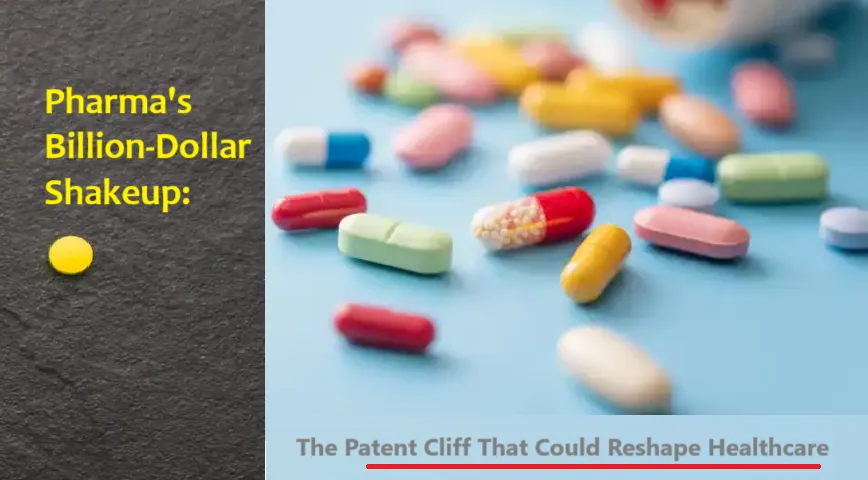
The Patent Cliff That Could Reshape Healthcare Pharma Future
Pharma's Billion-Dollar Shakeup: The Patent Cliff That Could Reshape Healthcare
The pharmaceutical industry is on the brink of a seismic shift. In the coming years, nearly 200 drugs will lose patent protection, opening the floodgates for generics and biosimilars. Among them, at least 69 blockbuster drugs—each raking in over $1 billion annually—will face competition. With over $300 billion in revenue at risk, the stakes have never been higher.
The Looming Patent Cliff: A New Era for Pharma
For decades, pharmaceutical companies have relied on patent protections to maintain exclusivity over their innovations, reaping billions from life-saving drugs. However, the expiration of these patents means that more affordable alternatives—generics and biosimilars—will enter the market, slashing prices and reshaping access to critical medications.
Unlike previous waves of patent expirations, this upcoming cliff includes a significant number of biologic drugs, which are complex, high-cost treatments for conditions like cancer, autoimmune diseases, and diabetes. This shift paves the way for a rapid increase in biosimilar adoption, promising lower costs for patients but posing an existential threat to big pharma's business models.
Blockbuster Drugs at Risk
Some of the biggest names in the pharmaceutical world are bracing for impact. Key drugs losing exclusivity include:
2025: Xarelto ($6.8B), Entresto ($6.0B), and Eliquis ($12.2B)
2027: Trulicity ($7.1B), Ocrevus ($7.1B), and Xtandi ($6.3B)
2028: Keytruda ($25.0B), Opdivo ($9.0B), and Gardasil 9 ($8.9B)
2031: Dupixent ($11.6B), Ozempic ($18.4B)
2033: Biktarvy ($11.9B), Skyrizi ($6.4B), and Rinvoq ($5.3B)
2037: Trikafta ($8.9B)
These aren't just numbers; they represent life-changing treatments for millions of patients worldwide. The affordability and accessibility of these drugs post-patent expiration could be a game-changer for global healthcare.
How Pharma is Fighting Back
Pharmaceutical giants are not sitting idly by as their cash cows come under threat. They're employing several strategies to extend product lifecycles and maintain market dominance:
New Formulations & Combinations: Companies are tweaking existing drugs, creating extended-release versions or combining treatments to secure fresh patents.
Biologic & Biosimilar Wars: Unlike traditional generics, biosimilars are not exact copies but closely mimic original biologics. Pharma companies are investing heavily in next-gen biologics to stay ahead.
Litigation & Regulatory Maneuvers: Lawsuits and patent extensions are common tactics to delay competition.
Patient Loyalty Programs: Offering discounts and patient assistance programs helps retain users even after generics emerge.
What This Means for Patients and Healthcare Costs
For patients, the arrival of generics and biosimilars means lower drug costs, greater accessibility, and expanded treatment options. Biosimilars have been shown to reduce treatment costs by up to 30-50%, a significant relief for both individuals and healthcare systems.
However, challenges remain. Adoption of biosimilars has been slower than traditional generics due to doctor hesitancy, regulatory barriers, and complex manufacturing requirements. Ensuring widespread availability will require policy support and awareness campaigns.
A Healthcare Revolution in the Making
As the pharmaceutical industry navigates this billion-dollar shakeup, the battle between big pharma, generics, and biosimilars will shape the future of medicine. While companies fight to protect their revenues, patients stand to benefit from more affordable, life-saving treatments.
The next decade will be crucial. Will pharma giants innovate fast enough to stay ahead, or will the era of high-priced monopolies finally come to an end?
Sources:
Pharmaceutical Industry Reports (2024)
FDA Biosimilars Data (2023)
Industry Expert Insights (2025)
Stay tuned as we continue to track this unfolding revolution in healthcare.